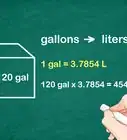Converting denary to hexadecimal is easy!
This article was co-authored by wikiHow staff writer, Kyle Smith. Kyle Smith is a wikiHow Technology Writer, learning and sharing information about the latest technology. He has presented his research at multiple engineering conferences and is the writer and editor of hundreds of online electronics repair guides. Kyle received a BS in Industrial Engineering from Cal Poly, San Luis Obispo.
wikiHow marks an article as reader-approved once it receives enough positive feedback. In this case, several readers have written to tell us that this article was helpful to them, earning it our reader-approved status.
This article has been viewed 1,354,477 times.
Learn more...
This wikiHow guide will show you how to convert from decimal to hexadecimal. Hexadecimal is a base sixteen numeral system. This means it has 16 symbols that can represent a single digit, adding A, B, C, D, E, and F on top of the usual ten numbers. Converting decimal numbers (also called denary numbers) to hexadecimal requires using division to find the corresponding digits.
Things You Should Know
- Use the intuitive method with powers to learn the mechanics behind the conversion.
- Use the fast method with remainders to quickly convert decimal numbers to hexadecimal.
- Check your work by converting the hexadecimal number back to decimal.
Converter
Small Number Conversions
| Decimal | 0 | 1 | 2 | 3 | 4 | 5 | 6 | 7 | 8 | 9 | 10 | 11 | 12 | 13 | 14 | 15 |
|---|---|---|---|---|---|---|---|---|---|---|---|---|---|---|---|---|
| Hex | 0 | 1 | 2 | 3 | 4 | 5 | 6 | 7 | 8 | 9 | A | B | C | D | E | F |
Steps
Intuitive Method Using Powers
-
1Use this method if you're a beginner to hexadecimal. Of the two approaches in this guide, this one is easier for most people to follow. An important part of learning math is understanding the intuition behind operations. If you're already comfortable with different bases, try the faster method below.[1]
- Note that “decimal” and “denary” numbers both refer to the base-ten system.
- If you're completely new to hexadecimal, you might want to review the basic concepts.
-
2Write down the powers of 16. Each digit in a hexadecimal number represents a different power of 16, just like each decimal digit represents a power of 10. This list of powers of 16 will come in handy during the conversion:
- 165 = 1,048,576
- 164 = 65,536
- 163 = 4,096
- 162 = 256
- 161 = 16
- If the decimal number you're converting is larger than 1,048,576, calculate higher powers of 16 and add them to the list.
Advertisement -
3Find the largest power of 16 that fits in your decimal number. Write down the decimal number you're about to convert. Refer to the list above. Find the largest power of 16 that's smaller than the decimal number.
- For example, if you're converting 495 to hexadecimal, you would choose 256 from the list above.
-
4Divide the decimal number by this power of 16. Stop at the whole number, ignoring any part of the answer past the decimal point.
- In our example, 495 ÷ 256 = 1.93... , but we only care about the whole number 1.
- Your answer is the first digit of the hexadecimal number. In this case, since we divided by 256, the 1 is in the "256s place."
-
5Find the remainder. This tells you what's left of the decimal number to be converted. Here's how to calculate it, just as you would in long division:
- Multiply your last answer by the divisor. In our example, 1 x 256 = 256. (In other words, the 1 in our hexadecimal number represents 256 in base 10).
- Subtract your answer from the dividend. 495 - 256 = 239.
-
6Divide the remainder by the next higher power of 16. Refer back to your list of powers of 16. Move down to the next smallest power of 16. Divide the remainder by that value to find the next digit of your hexadecimal number. (If the remainder is smaller than this number, the next digit is 0.)
- 239 ÷ 16 = 14. Once again, we ignore anything past the decimal point.
- This is the second digit of our hexadecimal number, in the "16s place." Any number from 0 to 15 can be represented by a single hexadecimal digit. We will convert to the correct notation at the end of this method.
-
7Find the remainder again. As before, multiply your answer by the divisor, then subtract your answer from the dividend. This is the remainder still to be converted.
- 14 x 16 = 224.
- 239 - 224 = 15, so the remainder is 15.
-
8Repeat until you get a remainder below 16. Once you get a remainder from 0 to 15, it can be expressed by a single hexadecimal digit. Write this down as a final digit.
- The last "digit" of our hexadecimal number is 15, in the "1s place."
-
9Write your answer in the correct notation. You now know all the digits of your hexadecimal number. But so far, we've only been writing them in base 10. To write each digit in proper hexadecimal notation, convert them using this guide:
- Digits 0 through 9 remain the same.
- 10 = A; 11 = B; 12 = C; 13 = D; 14 = E; 15 = F
- In our example, we ended up with digits (1)(14)(15). In the correct notation, this becomes the hexadecimal number 1EF.
- You’re done! You’ve converted a decimal number to hexadecimal. You can also convert binary numbers to hexadecimal.
-
10Check your work. Checking your answer is easy when you understand how hexadecimal numbers work. Convert each digit back into decimal form, then multiply by the power of 16 for that place position. Here's the work for our example:
- 1EF → (1)(14)(15)
- Working right to left, 15 is in the 160 = 1s position. 15 x 1 = 15.
- The next digit to the left is in the 161 = 16s position. 14 x 16 = 224.
- The next digit is in the 162 = 256s position. 1 x 256 = 256.
- Adding them all together, 256 + 224 + 15 = 495, our original number.
Fast Method Using Remainders
-
1Divide the decimal number by 16. This method uses long division to convert the decimal number to hexadecimal. Treat the division as an integer division. In other words, stop at a whole number answer instead of calculating out the digits after the decimal point.
- For this example, let's be ambitious and convert the decimal number 317,547. Calculate 317,547 ÷ 16 = 19,846, ignoring the digits after the decimal point.
-
2Write down the remainder in hexadecimal notation. Now that you've divided your number by 16, the remainder is the part that can't fit into the 16s place or higher. Therefore, the remainder must be in the 1s place, the last digit of the hexadecimal number.
- To find the remainder, multiply your answer by the divisor, then subtract the result from the dividend. In our example, 317,547 - (19,846 x 16) = 11.
- Convert the digit into hexadecimal notation using the small number conversion chart at the top of this page. 11 becomes B in our example.
-
3Repeat the process with the quotient. You've converted the remainder into a hexadecimal digit. Now to continue converting the quotient, divide it by 16 again. The remainder is the second-to-last digit of the hexadecimal number. This works from the same logic as above: the original number has now been divided by (16 x 16 =) 256, so the remainder is the portion of the number that can't fit into the 256s place. We already know the 1s place, so this remainder must be the 16s place.
- In our example, 19,846 / 16 = 1240.
- Remainder = 19,846 - (1240 x 16) = 6. This is the second-to-last digit of our hexadecimal number.
-
4Repeat until you get a quotient smaller than 16. Remember to convert remainders from 10 to 15 into hexadecimal notation. Write each remainder down as you go. The final quotient (smaller than 16) is the first digit of your number. Here's our example continued:
- Take the last quotient and divide by 16 again. 1240 / 16 = 77 Remainder 8.
- 77 / 16 = 4 Remainder 13 = D.
- 4 < 16, so 4 is the first digit.
-
5Complete the number. As mentioned earlier, you're finding each digit of the hexadecimal number from right to left. Check your work to make sure you wrote them in the right order.
- Our final answer is 4D86B.
- To check your work, convert each digit back to a decimal number, multiply by powers of 16, and sum the results. (4 x 164) + (13 x 163) + (8 x 162) + (6 x 16) + (11 x 1) = 317547, our original decimal number.
- Next, check out how to convert hexadecimal numbers to binary or decimal.
Community Q&A
-
QuestionHow do I convert 1111001 to a hexadecimal?
 Community AnswerSince every 4 bits in a binary code is 1 bit in hex, the best thing to do is convert each 4 bits into a decimal number then into a hex number. 1001 would be 8 plus 1 which would then be 9. 0111 would be 4 plus 2 plus 1 which would then be 7. The answer is 79.
Community AnswerSince every 4 bits in a binary code is 1 bit in hex, the best thing to do is convert each 4 bits into a decimal number then into a hex number. 1001 would be 8 plus 1 which would then be 9. 0111 would be 4 plus 2 plus 1 which would then be 7. The answer is 79. -
QuestionCan I convert decimals to hexadecimals?
 Community AnswerStart with number n, for the sake of having an example, let's say 86. Take the number and divide by 16 -> 5R6. If the result of your initial division (not the remainder) is greater than 16, then you must divide that number by 16. In this case, 86dec is equal to 56hex.
Community AnswerStart with number n, for the sake of having an example, let's say 86. Take the number and divide by 16 -> 5R6. If the result of your initial division (not the remainder) is greater than 16, then you must divide that number by 16. In this case, 86dec is equal to 56hex. -
QuestionHow do I convert 98735 base 2 to hexadecimal?
 Community Answer98735 is not in base 2. The figures should not be larger than the base. 98735 to binary (base 2) is 11000000110101111.
Community Answer98735 is not in base 2. The figures should not be larger than the base. 98735 to binary (base 2) is 11000000110101111.
About This Article
1. Write down the powers of 16.
2. Find the largest power that fits in your decimal number.
3. Divide the decimal number by this power of 16.
4. Find the remainder.
5. Divide the remainder by the next higher power of 16.
6. Find the remainder again.
7. Repeat until you get a remainder below 16.
8. Write your answer in the correct notation.


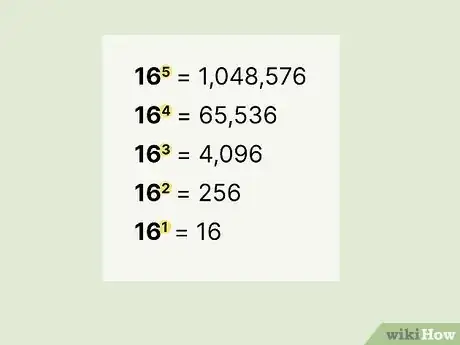

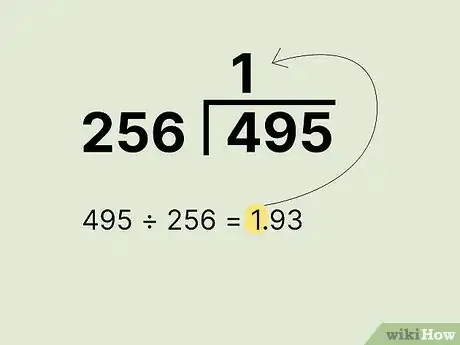

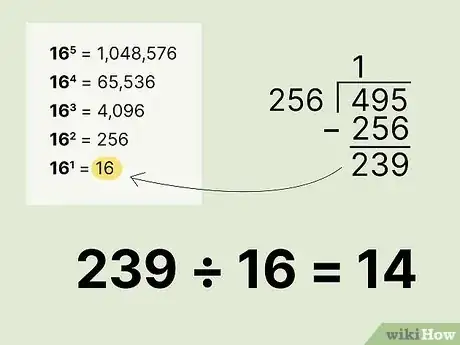
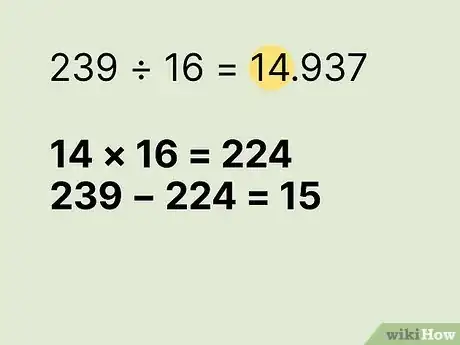
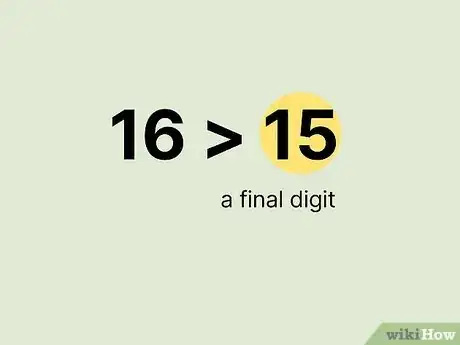
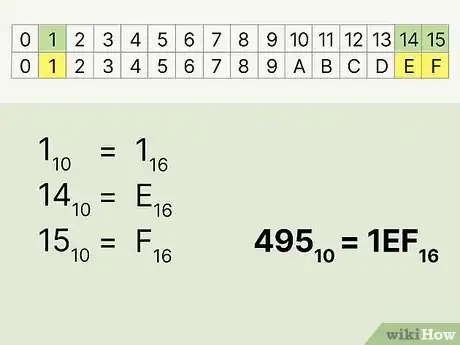


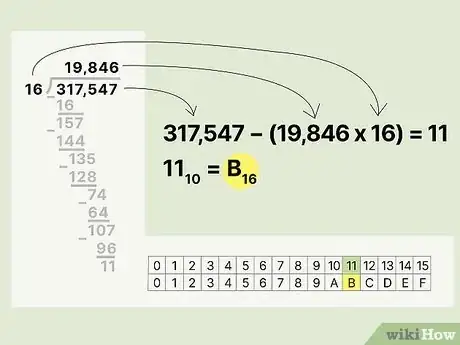

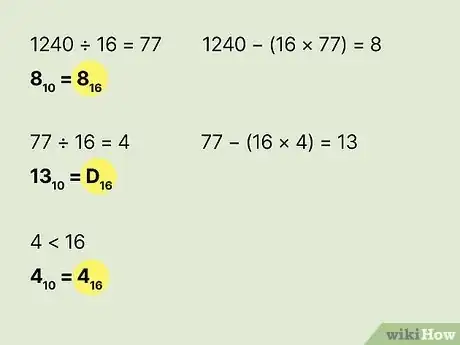


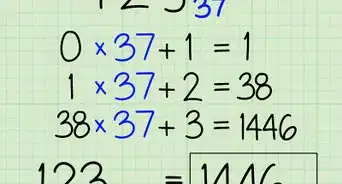
-to-Grams-(g)-Step-8-Version-5.webp)
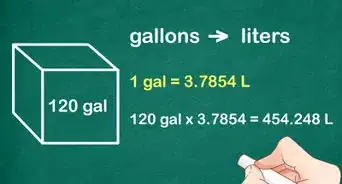
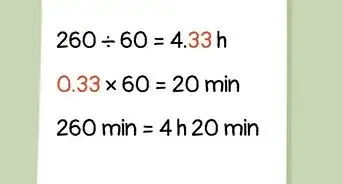
-to-Fahrenheit-(°F)-Step-6-Version-2.webp)
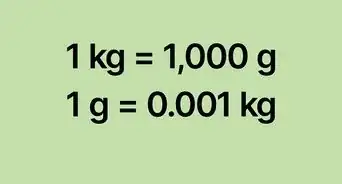
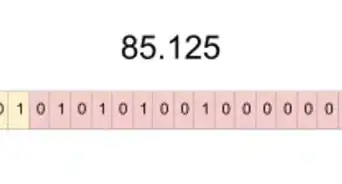

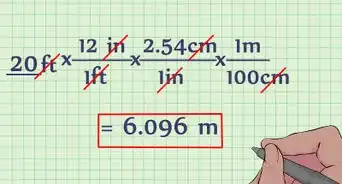
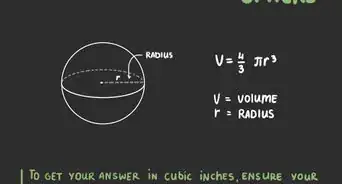
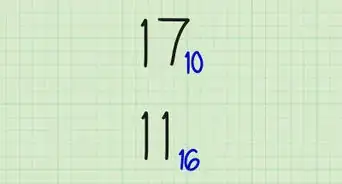

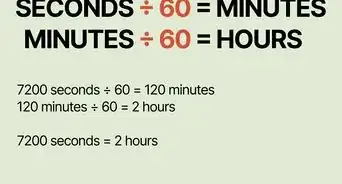










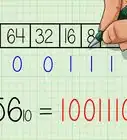
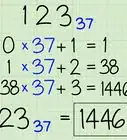
-to-Grams-(g)-Step-8-Version-5.webp)
